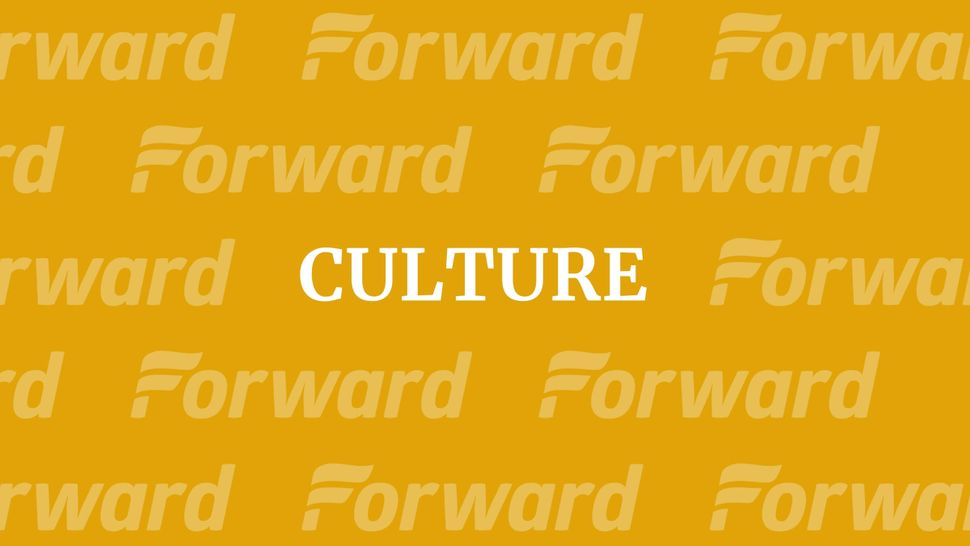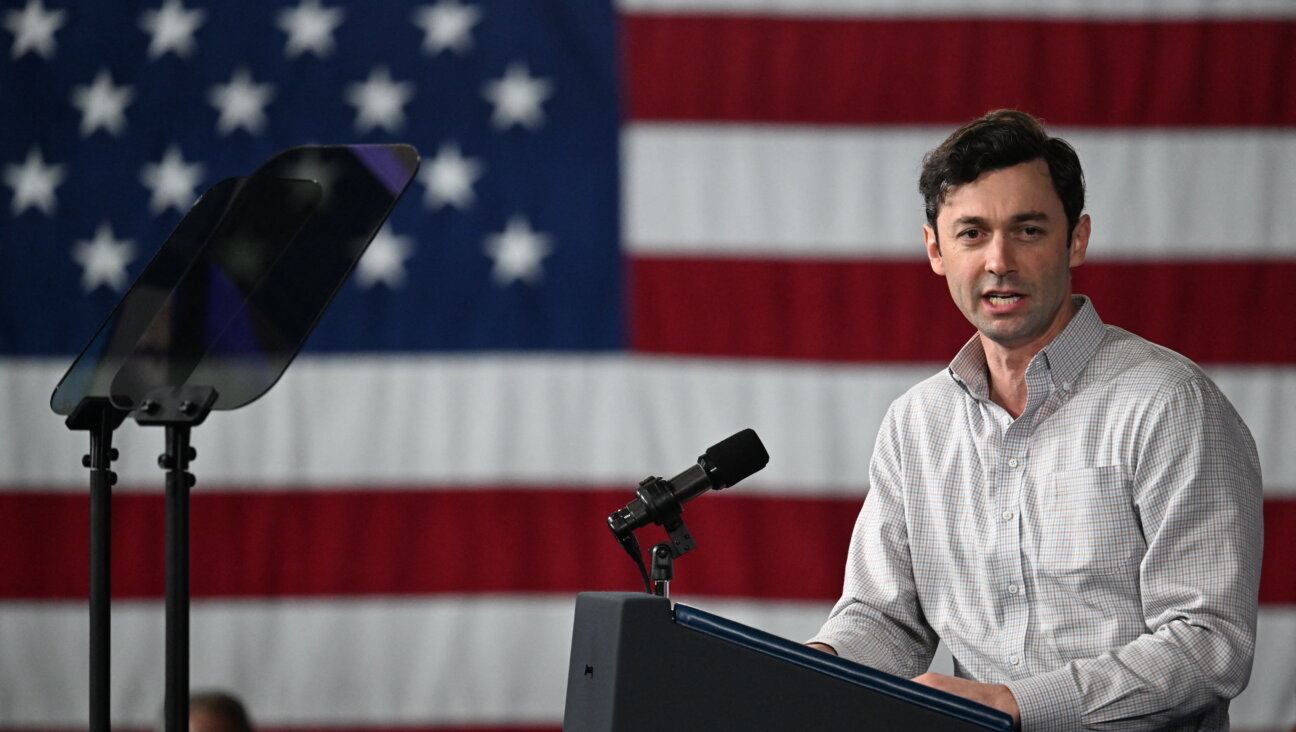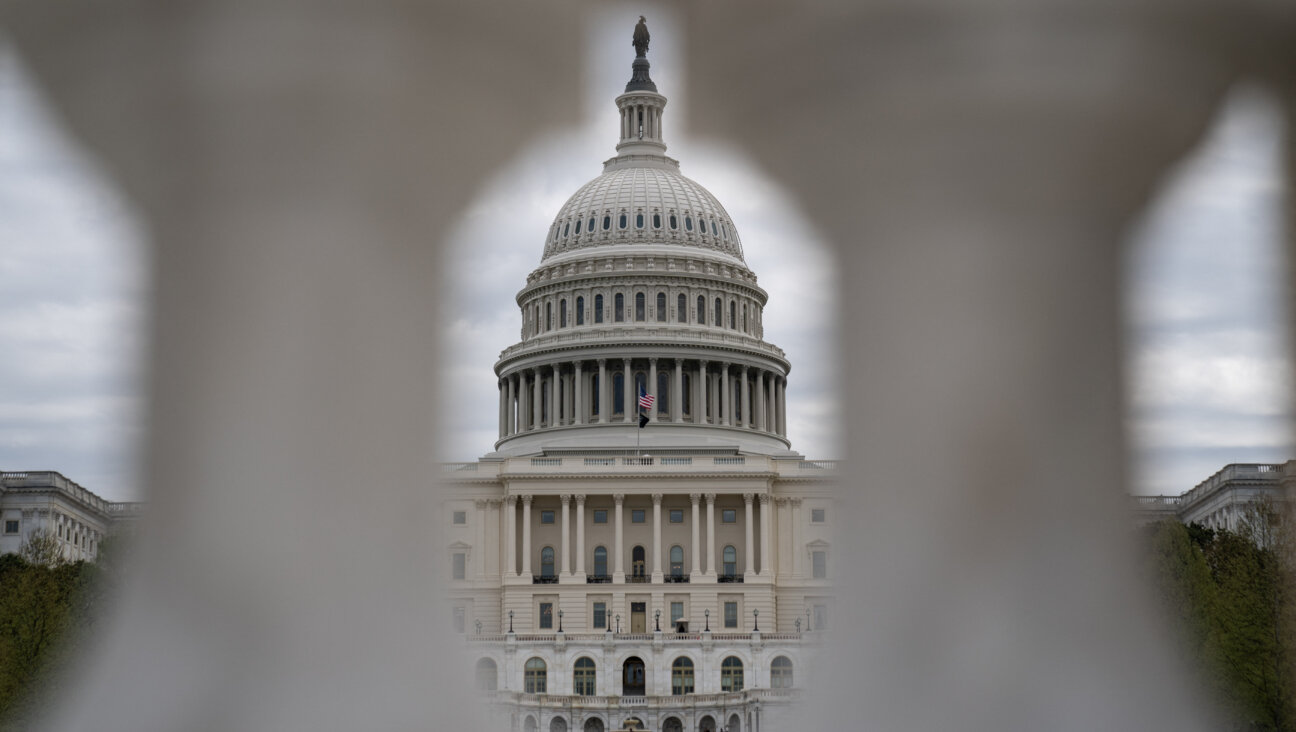Here’s a Book That’s as Big as New York — And Almost as Jewish

Image by Nonstop Metropolis
Nonstop Metropolis
Edited By Rebecca Solnit and Joshua Jelly Schapiro
University of California Press, 232 Pages, $29.95
It’s not often you see a book release like the one that recently took place for “Nonstop Metropolis: A New York City Atlas.”
The Queens Museum hosted a launch party featuring a mapmaking workshop, a soundtrack of “songs and music referenced in the book,” readings by a few of the book’s two dozen contributing writers, and remarks from its co-editors, Rebecca Solnit and Joshua Jelly-Schapiro. Tucked into press copies of “Nonstop Metropolis” was a temporary tattoo of the book’s logo — a human heart with the Chrysler Building and Brooklyn Bridge sprouting from it while trains and planes zoom all around .
And when you get your hands on the 224-page anthology of essays, interviews and maps, it’s easy to understand the excitement. The book is the capstone to a trilogy with previous installments dedicated to New Orleans (“Unfathomable City,” in 2013) and San Francisco (“Infinite City,” in 2010). “This trilogy of books… was created in the belief that any significant place is in some sense infinite, because its stories are inexhaustible and the few that are well known overshadow the many worth knowing,” Solnit writes in the introduction. And the New York edition feels like grand finale, in honor of what she calls “the nation’s capital in all but name.”
The 26 maps in “Nonstop Metropolis” look at the city through the lenses of riots, the movement of trash, whaling, publishing, climate change, Spanish-language radio stations, and basketball, among other themes. One map, “Mysterious Land of Shaolin: The Wu-Tang Clan’s Staten Island” is accompanied by an interview with RZA, one of the iconic hip-hop group’s founding members. Another presents Queens as “the capital of linguistic diversity, not just for the five boroughs, but for the human species.”
The sum of it all is, like New York itself, overwhelming, alluring and dazzlingly diverse. More than 40 artists, designers, writers and thinkers collaborated to produce the book.
“We like to call ourselves ‘co-directors,’” Jelly-Schapiro told me. “We’re working with artists — performers, in a sense — and there’s people we interview and cartographers, [and] we’re orchestrating and conceptualizing.”
Solnit added, “Sometimes I call myself ‘ringmaster.’”
Solnit and Jelly-Schapiro both call themselves “half-Jewish,” and Solnit jokes that together they make a full Jew. “Telling the cultural history or political history or intellectual history of New York is impossible to do without Jews really being extremely central,” Jelly-Schapiro says.
The volume includes plenty of familiar names, institutions, words and events. Michael Bloomberg, the billionaire mayor of the city from 2002 to 2013, appears alongside Cornelius Vanderbilt and Alexander Hamilton on the finance-focused map, “Capital of Capital: How New York Happened.” Bette Midler, Emma Lazarus and Wendy Wasserstein make appearances in “City of Women.” A map called “Black Star Lines: Harlem Secular and Sacred” features the Black Hebrew congregation Commandment Keepers Synagogue. The legendary city planner Robert Moses is one of three cultural goliaths, along with Jane Jacobs and Frederick Law Olmsted, to star on the map, “Makers and Breakers: Olmstead, Moses, Jacobs Shape the City.” An essay called “Schleptropolis” focuses on the daily flow of people in and out of Manhattan.
The hub of the book’s Jewish activity is located near its midway point, where readers find two essays meditating on the subject of New York Jewishness. One, by the journalist (and Forward contributor) Sheerly Avni, interweaves New York’s Jewish history with Avni’s experiences as the daughter an atheist Israeli ex-pat who founded the Jewish Repertory Theater, and, as she says, “found success as a purveyor of Jewish nostalgia, catering to those second- and third-generation Jews’ deep longing for an older New York, with its pumpernickel bread and black cherry sodas.” The essay begins with an epigraph from Lenny Bruce: “If you live in New York… you are Jewish. It doesn’t matter if you’re Catholic, you’re Jewish.”
The other piece, by Joel Dinerstein, an English professor at Tulane University, is a mini memoir titled “The Lost World of Jewish Flatbush,” in which the author writes, “In the midst of white flight I attended the fabled Erasmus Hall High School, one of the oldest (founded in 1786), largest (5,000 students), and most Jewish public high schools in America.”
Dinerstein mentions some of the school’s famous alumni — Barbra Streisand, Neil Diamond, Bernard Malamud — and the pillars of his “ingrained ethno-religious identity” from his upbringing: “New York street-cred, Yiddishkeit, Mel Brooks, summer camp, Paul Simon, Carole King, Bugs Bunny (he’s from Flatbush).” The piece, like many in the book, is about the city’s ever-shifting demographics and identity. “In 1968 Erasmus was 70% white (mostly Jewish),” Dinerstein writes, “but five years later it was 75% African American and Afro-Caribbean, with 10% Latino and Asian American.”
Accompanying these essays is a hyper-detailed two-page map called “What Is a Jew? From Emma Goldman to Goldman Sachs.” One layer presents circa-2011 statistics about the Jewish population of each borough: Brooklyn (561,100), Manhattan (239,700), Queens (197,800), the Bronx (53,900) and Staten Island (33,900). Another layer highlights sites of Jewish significance, from the Jewish cemeteries of Staten Island to the Kupferberg Holocaust Resource Center at Queensborough Community College to Manhattan’s City College, which the map notes, is “home to 10 Jewish Nobel Laureates.”
Perhaps most absorbing are the names of notable Jews sprinkled across the landscape, according to their point of origin or notoriety. Brooklyn, we’re reminded, is home to Maurice Sendak, Sandy Koufax, Harry Houdini, Bernie Sanders, Aaron Copland, and Arthur Miller.
The Bronx is home to the Son of Sam Killer David Berkowitz, the activist/Congresswoman Bella Abzug, Harvey Kurtzman, the founder of MAD magazine, and the iconic designers Calvin Klein and Ralph Lauren (born Ralph Lifshitz). The book’s publisher, University of California Press, gave the Forward permission to publish the Manhattan portion of the map, so you can comb through the legions of luminaries (and folks not so luminary, like Bernie Madoff) yourself.
Solnit says the map isn’t intended merely to inform; it’s also to repudiate hatred. “Stereotypes and generalizations generally precede discrimination,” she writes in the preface to the map. “Often they depend on the belief that all members of the hated group have common characteristics, so much so that you can punish any member for the sins all members share. Except that they don’t.”
Categories are leaky, she says — and New York Jews are one of the best examples. “The word Jew contains a host of internal contradictions, from positions on Israel and capitalism and religion to race and class,” she writes. “What can you say of a group that, even within New York, ranges from Bugsy Siegel to Sammy Davis Jr. to Ruth Bader Ginsburg to the Beastie Boys?”
Solnit is far from proprietary about the concept of the book. “I think every place should have an atlas, or many atlases,” she said. “It would be great if it became a way people just try and deepen the understanding of what this place is and what places are.”
She added that the “What Is a Jew?” map, specifically, could be a template for maps about Syrians or Muslims or transgender people. If you look at anything carefully enough, she says, “The differences within the categories can be almost more powerful than the similarities.”
Philip Eil is a freelance journalist based in Providence, R.I.

I hope you appreciated this article. Before you go, I’d like to ask you to please support the Forward’s award-winning, nonprofit journalism during this critical time.
Now more than ever, American Jews need independent news they can trust, with reporting driven by truth, not ideology. We serve you, not any ideological agenda.
At a time when other newsrooms are closing or cutting back, the Forward has removed its paywall and invested additional resources to report on the ground from Israel and around the U.S. on the impact of the war, rising antisemitism and the protests on college campuses.
Readers like you make it all possible. Support our work by becoming a Forward Member and connect with our journalism and your community.
Make a gift of any size and become a Forward member today. You’ll support our mission to tell the American Jewish story fully and fairly.
— Rachel Fishman Feddersen, Publisher and CEO
Join our mission to tell the Jewish story fully and fairly.






















